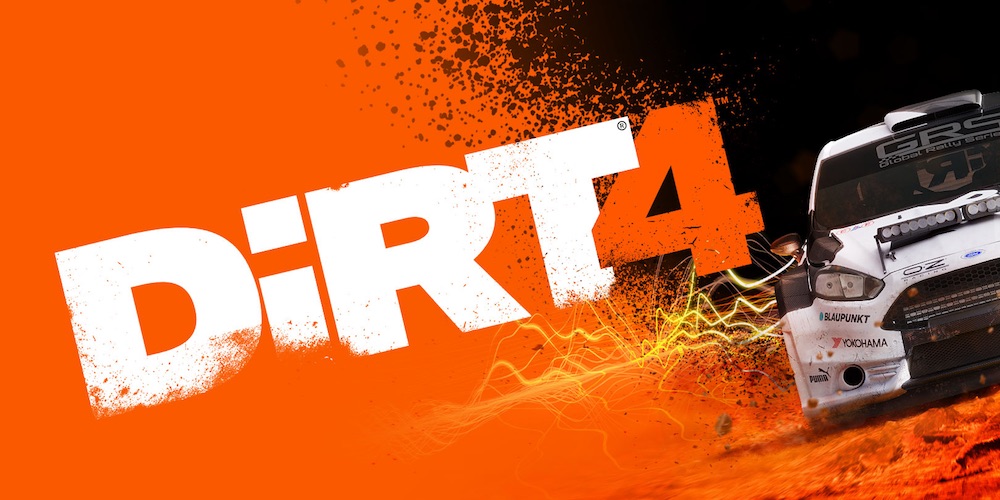
DiRT 4 is the newest rally-focused game from Codemasters, who are a studio with a long history of developing and publishing rally games. Although their games in the racing genre have tended to lean towards casual, fun gameplay, 2015’s DiRT Rally demonstrated they were able to craft an excellent rally simulation. With DiRT 4, Codemasters wanted to create a game that can be enjoyed by those that want a fun racing experience as well as those that enjoy realistic simulation, and given recent history, I was optimistic they could deliver.
Straight from the first launch, DiRT 4 impresses with the thought gone into making it accessible and easy to navigate. Firstly, you are presented with an option of fun or simulation handling. After making your selection, you race through a short stage in a slow car. Your stage time is used to suggest one of four difficulty settings, and, at this point, you can choose to change the handling between fun and simulation and have as many goes of the shakedown stage as you like until you decide which way to go. Once you’ve selected your difficulty setting, you can then tweak it to suit your taste by adjusting opponent skill level and driver assists. The difficulty settings adjust the bonus modifier which affects how many credits you earn. Obviously the harder you make it for yourself, the higher the bonus.
At this point, you can dive straight into the campaign, but it is probably a good idea to hone your skills at the Dirt Academy, which is set at the DirtFish Rally school grounds. This is basically a big area with various tracks and surfaces from gravel to tarmac, as well warehouses, containers and ramps made from scaffolding. I suspect the latter are not part of the real-life rally school.
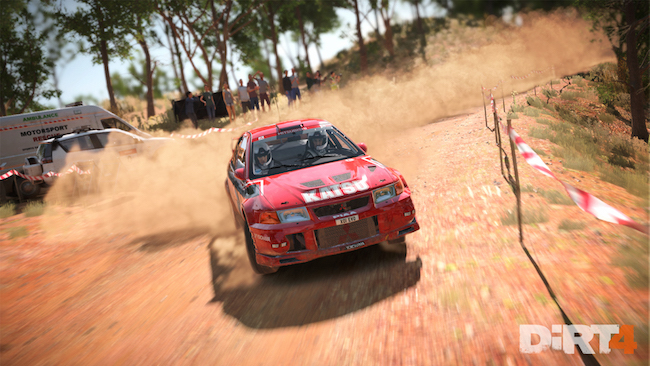
I must say I like the approach that Codemasters took to the rally school. You start each lesson by observing how it is done and then you just get right into it. The lessons are in the form of timed laps around a course which requires you to use a particular skill. If you muck it up, you just keep going around and around until you get it right. This is an excellent way to learn because there are no menus or interruptions. You just keep driving like you would in real life. Once your lap time is good enough, you can proceed to the next lesson. In my opinion, this is how all driving lessons in racing games should be done.
The driving campaign which proceeds follows a familiar format. You start off with nothing and as a nobody. As you race at events, you gain reputation and money. As you progress through events, you unlock new parts of the campaign including different racing types. There is rally, land rush, rally cross, and historic racing. You have the freedom to go back and retry any event you’ve already completed to improve your result and earn more money as you go. As your reputation grows, you are offered contracts to drive for teams which offer bigger pay and bonuses. Driving for a team means you don’t have to buy a car, but they take a bigger cut of your earnings.
Another approach to the campaign is to start your own team, and you can do this at any time you like. The advantage of running your own team is you get to keep more of your earnings; however, this is a much more involved and complicated way to approach things. You have to hire staff for your team, and they take a percentage of your earnings as their payment. You can also upgrade your team’s facilities, such as the workshop and catering, which confers bonuses to the skills of your staff, for example, allowing your mechanics to complete repairs quicker or your agent to sign better sponsorship deals. There’s a surprising depth to the management of personnel and facilities, but you don’t have to get bogged down in it.
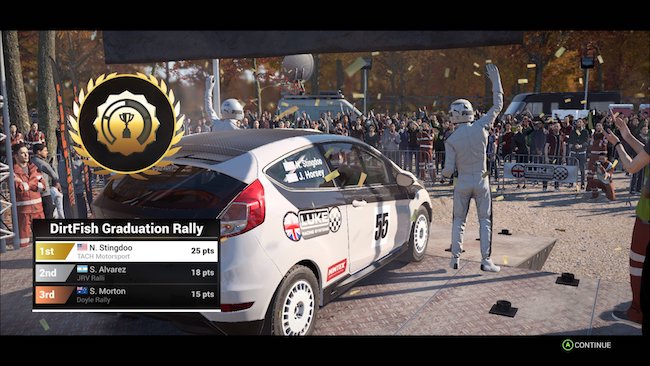
If you aren’t up for the full campaign experience from the start, there’s good news. Codemasters have made all the cars available in a “Freeride” section of the game. You don’t have to grind through the campaign to have a crack at a slippery Swedish snow stage in a Group B monster. The Freeride section of the game allows you to create your own championship, and you can add as many events to your custom championship as you like. To create an event, you select from a list of locations around the world and then add any number of stages to the event. Sadly, there isn’t a lot of choice for locations around the world to set your stages in if you’re a rally fan. For rally championships, you can choose from only four locations: Wales, Michigan in the USA, Fitzroy in Australia and the tarmac of Tarragona in Spain.
The stages are randomly generated, but you have sliders that allow you to select the stage length and complexity. You can also choose the time of day and from many different weather options which vary depending on the location of the event. You can then save each event individually and re-use these for other championships. The procedurally generated stages are very realistic in appearance, taking on the character of their real world locations and they drive very well. However, after a while, you start to recognise certain corners and sections that are being reused. This approach looks to be aimed at providing endless replayability, but I’m not convinced it was the right approach. I think Codemasters went down this route to address some of the criticism of DiRT Rally’s lack of stages and locations, but we are still left with only four locations and a bunch of sections that start to feel very familiar after a few runs. Of course, the reality of rally is that the same stages tend to be used over many years, allowing drivers to become familiar with them. Do we need endless combinations of the same sections, or do we need a fixed but plentiful number of hand-crafted stages to master? There seem to be competing priorities here, and everyone’s opinion will differ.
There are some extra locations in the land rush event type, but they are basically similar dusty desert circuits. There are also five different locations in the rally cross event type with some of them offering two or three configurations, but these all look somewhat similar too.
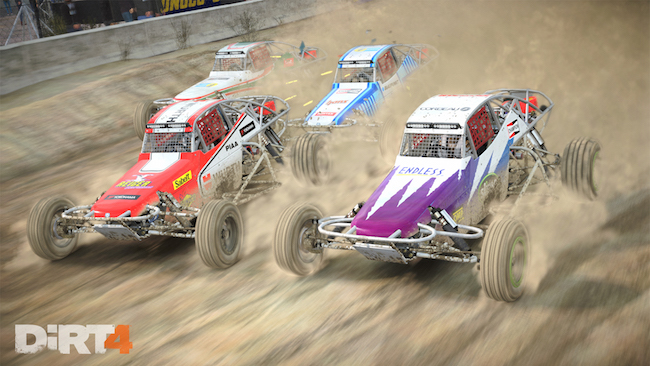
Codemasters has also included a Joyride section where you can play through time attack and crash attack stages. Time attack stages are basically timed laps around a gymkhana-style course set at the DirtFish Rally school grounds. There are floating markers that either add or subtract a second of lap time. The tracks are a nice mix of surfaces, corners and routes. The trickier routes are harder to master but have more of the markers that lower your lap time. The faster and easier routes are littered with the markers that you want to avoid. Smash attack is similar, except the course simply contains boards that you have to smash through as quickly as possible. If you can smash them all your lap time is posted onto the online leaderboards.
Both of these modes are a lot of fun, and the best part is that every single car in the game is featured in the Joyride section too, meaning there are hours of fun to be had without even touching the campaign. DiRT 4 also features a sectioned labelled “Competitive.” This is all about comparing yourself to the other players out there. The Pro Tour is basically like the campaign rallies, except you compete with human opponents. Up to eight players compete, but you need a minimum of four to start. The stages are randomly generated, and each event includes two stages as far as I could determine during my time with the game. If you particularly like a stage, you can also save it to your own collection of stages so that you can use it in your own custom events in Freeride which is a nice touch. The Pro Tour vehicle class and stages reset every 24 hours, so there is plenty of variety in the competitions.
Matchmaking is done on the basis of whether you’ve selected “Fun” or “Simulation” handling, as well as divisions and tiers. As you compete, you earn money and points. If you earn enough points, you will work your way up the tiers and encounter harder opponents but earn more rewards for competing well. This is a great way to encourage players to improve their driving.
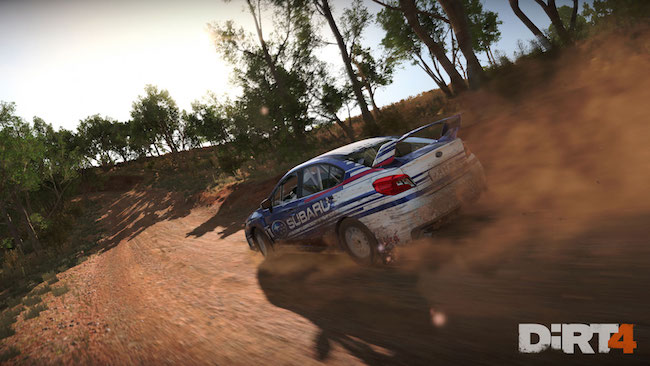
The Community challenges are made up of a number of daily, weekly and monthly events. While the events are active, you can enter them and post your best times. You can also try as many times as you like, and you can use your own cars or loan a car if you don’t have one appropriate for an event. Your times are then scored based on the rest of the community, and you can see which tier your time sits in and how close you are from the next tier on a clear graph. Each tier comes with a range of monetary rewards and is a neat way to encourage you to try harder to reach the next tier when you see how much more money you can earn.
One disappointment is that the multiplayer is based only on the four game modes (rally, land rush, rally cross, and historic rally). I suppose rally cross and land rush would be fun with your mates, but there are no multiplayer mini-games like in DiRT 3, which is a sad omission, in my opinion, because those games were an absolute hoot. Another disappointment also was that I wasn’t able to thoroughly test the multiplayer in DiRT 4 because there were no sessions available for me to join.
The visual presentation of DiRT 4 is very polished. The game runs smoothly on average PC hardware, and on lower graphics settings it still looks very nice, so there’s plenty of scope to get the framerates up for the best driving experience. The cars are impressively detailed inside and out, and the locations you can race at are representative of their real world counterparts. Atmospheric effects such as fog, afternoon sunlight, and rain look fantastic too. Codemasters has also done a great job with the sounds in the game. The engine sounds of the various cars are an excellent representation of their real-life counterparts, from the metallic scream of a naturally aspirated BMW to the unique roar of Audi’s Group B five-cylinder turbo. A lot of attention has been given to all the subtle atmospheric sounds, including the slight howl of tyres approaching the limit of their grip on tarmac and the splashing of the tyres through puddles on a rain-soaked gravel stage. The sound design really adds to the immersive experience.
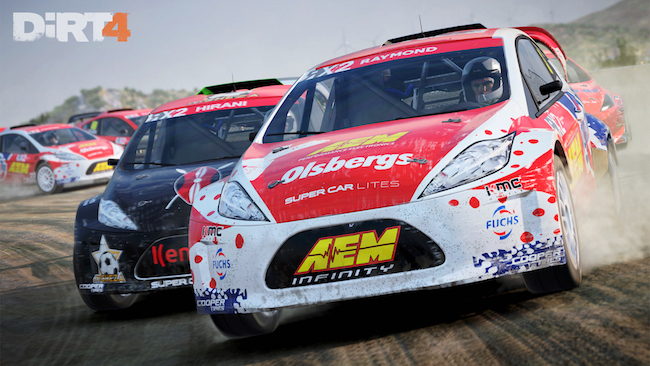
What really surprised me was the effort that went into choosing the music for the game. The soundtrack is excellent with heaps of great music from some very well-known artists. However, it’s the way Codemasters have weaved the music into the game that really impresses. The soundtrack is well integrated with the right kind of music at the right time. The music fades in and out in a subtle fashion with no jarring transitions. A nice touch is when you are viewing your car at the service park, the music sounds as if it’s playing over a stereo nearby and fades in when entering the menus.
If you’re like me and you don’t always want to drag your steering wheel out of the cupboard to have a quick bash in a racing game, the good news is DiRT 4 plays really well with a controller. Even the simulation handling physics are excellent with a controller, but you may need to make some tweaks to settings such as steering linearity to get the best feel. While I was quite happy to play along with the controller for a bit, I did finally get the wheel out to test the physics properly, and I was pleasantly surprised at just how much feeling the handling model had. I did need to make some adjustments to the settings, specifically the force feedback from components such as suspension, steering wheel and tyres. This helped uncover a wealth of feedback from the road surface and what the car was doing.
Surface changes are felt through the wheel, and there is a clear and noticeable difference in how the car handles on the same surface between wet and dry conditions. If you hit a puddle, the car will pull in that direction. The feedback is brilliant. I recommend getting a good feel for the handling model at the DirtFish Academy where you can really let loose on different surfaces and test your settings. You can really adjust your car using steering, throttle, and brake, and there is a clear difference between all the different drive types. They each require a different approach to driving, and that is a good indication the handling physics are well-sorted.
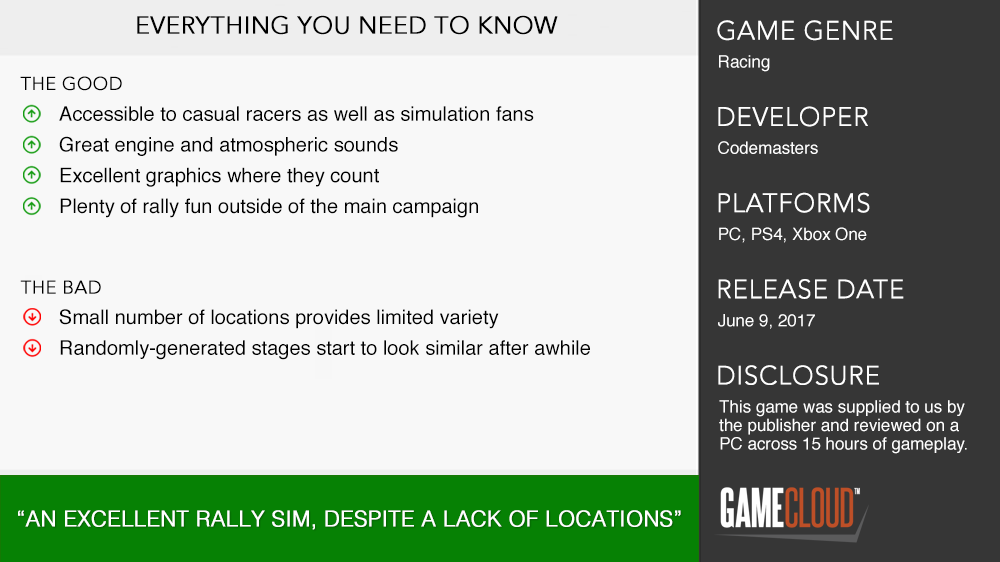
DiRT 4 is a polished rally simulation with attention given to great visuals, sounds and gameplay physics. There are hours of fun with plenty of exciting cars provided without needing to touch the campaign, although the game could do with a few more locations to add some variety that the randomly-generated stages don’t quite deliver. The online competitions provide plenty of challenge and reasons to come back regularly, although the multiplayer is lacking some of the fun mini-games that DiRT 3 had, which is a missed opportunity. Overall, if you’re a fan of rally and dirt-based racing, DiRT 4 is definitely worth a look.











